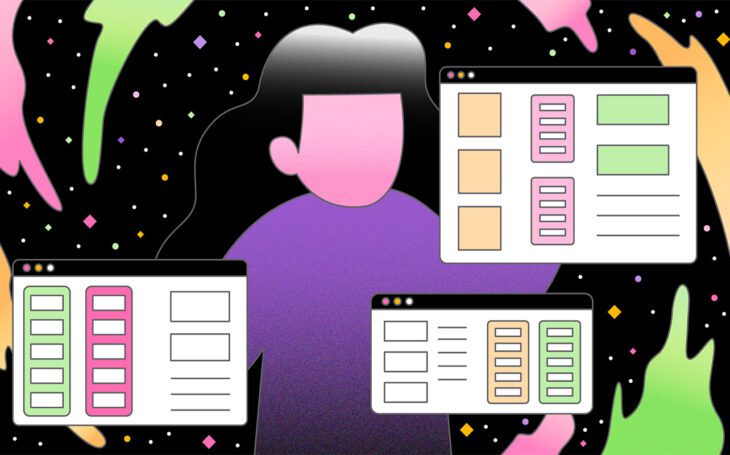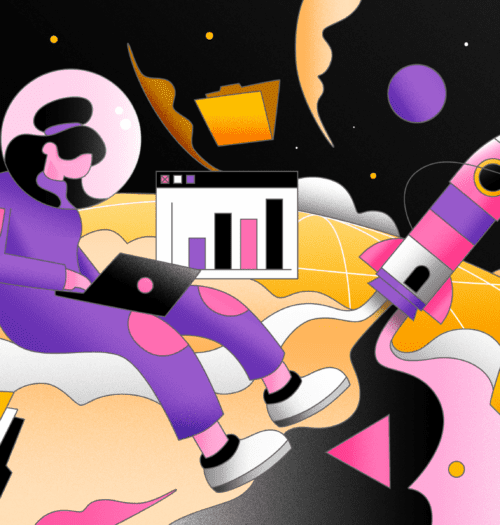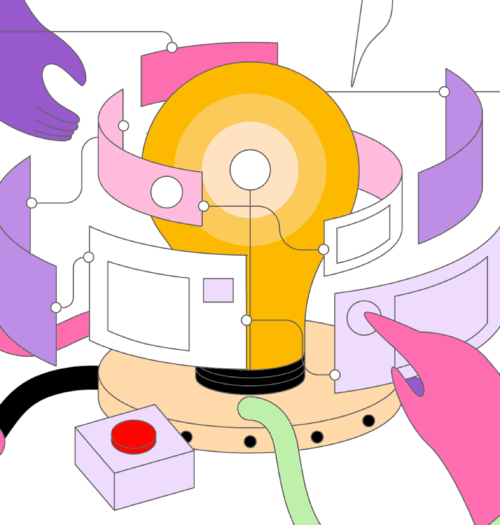🎁 Free 30-day publishing fees on Pay-As-You-GO. Get 15% off when recruiting from the UserQ Panel, with code HELLO15

Card sorting is a widely recognised user research method that helps designers and researchers understand how people classify, organise, and label information. Traditionally, card sorting has been a core tool in information architecture, helping to build intuitive navigation structures for websites, applications, and digital platforms. But what happens when you step outside these conventional uses and look at more creative, non-traditional applications of the card sorting method?
This blog will explore the full potential of card sorting beyond website design, with a focus on the diverse ways it can be applied across industries!
What is the card sorting method?
At its core, the card sorting method involves participants organising and categorising items (often written on index cards) in a way that makes the most sense to them. It’s a simple, cost-effective way to gather insights into how people group and label information. These insights can then be applied to create more intuitive structures, whether for a website, product interface, or even physical systems like libraries or stores. According to a study by Nielsen Norman Group, card sorting is one of the most effective methods for improving website usability, with businesses seeing a 60% increase in task success rates after using card sorting to inform site structure.
There are two main types of card sorting:
- Open card sorting: In this approach, participants group items into categories they create themselves. It is commonly used when there’s a need to understand how users naturally group content or when developing a new product’s information structure.
- Closed card sorting: Here, participants are given predefined categories and are asked to place the items into those categories. This approach is more often used when refining existing structures or validating an existing design.
While these two formats may seem straightforward, card sorting can be adapted and expanded into creative use cases far beyond the traditional user experience (UX) research domain.
Card sorting’s traditional applications in UX
Before diving into the creative applications, it’s important to acknowledge the card sorting method’s significance in the traditional UX sphere. It plays a crucial role in the development of clear and user-friendly information architectures, particularly for websites and applications. By using card sorting, UX designers can build a navigational structure that resonates with users’ mental models, making digital experiences more intuitive and efficient.
Non-traditional applications of card sorting
Although card sorting is primarily known for organising digital information, it is a versatile method that can be used creatively in various fields. Let’s look at some unconventional uses of card sorting that extend its utility beyond the typical digital design realm.
1. Academic planning and education
Card sorting can be highly effective in the education sector, particularly when developing curricula or learning modules. Instructors and education developers can use open card sorting to gain insights into how students or teachers categorise topics or learning materials. This can help ensure that courses are structured in a logical, understandable way, enhancing the learning experience. Research from the Journal of Educational Psychology indicates that organising learning material through methods like card sorting can lead to a 15-20% improvement in students’ information recall and understanding.
For example, when designing a science course, card sorting could be used to determine how students naturally group key topics such as biology, chemistry, and physics. This insight could help course designers structure lessons and units in a way that aligns with students’ natural understanding and mental frameworks.
2. Developing personas and customer journeys
Personas and customer journey maps are vital tools in marketing and product design, helping teams understand customer needs, pain points, and decision-making processes. Card sorting can be used creatively in persona development by organising traits, behaviours, and motivations. This can also extend to mapping out the touchpoints in a customer’s journey across various products or services.
For example, marketers can employ card sorting to categorise different customer types based on survey results or feedback. This can clarify which traits belong to each persona and the emotional or cognitive journey of various customer segments.
3. Corporate training and team building
In a corporate context, card sorting can be adapted for team-building exercises or for designing corporate training programmes. For instance, during onboarding or leadership development workshops, card sorting can be used to identify the competencies, skills, and values that team members consider most important for success. Open card sorting could encourage employees to classify their strengths and weaknesses, promoting self-reflection and team cohesion.
Additionally, card sorting can be employed to design the training content itself. By allowing participants to categorise the training topics that interest them most or feel most relevant to their roles, training programmes can be personalised to better meet individual needs.
4. Retail space and product categorisation
Retailers can apply the card sorting method to design more effective product layouts both in-store and online. In a retail environment, understanding how customers group and categorise products can help retailers develop more logical store layouts, making it easier for customers to find what they need. Retailers who used card sorting to re-design product categories on their websites experienced a 20% improvement in conversion rates and a 30% increase in average session duration, as users found it easier to navigate.
Likewise, e-commerce companies gain from card sorting by knowing consumer expectations for product classification. This approach can guarantee that a website’s product categories reflect consumer expectations, therefore lowering friction in the buying experience.
5. Organising conferences and events
Card sorting can help organizers of events and conferences arrange the agenda or breakout sessions depending on guest preferences. By allowing participants to classify various sessions or themes they think most pertinent, open card sorting might enable planners prioritise and arrange events in ways that appeal to guests.
Card sorting can also help classify various kinds of attendees or target groups so that the event meets the requirements of every audience segment. By means of a more tailored experience this can raise attendee satisfaction.
6. Designing patient experiences and healthcare systems
Card sorting can help to create patient-centered healthcare systems in the medical field. Patients might, for instance, arrange their many medical treatments or procedures into logical groups. By helping healthcare professionals provide more easily navigable and understood material, this technique can enable patients to negotiate their available treatment alternatives.
According to this report, hospitals and clinics that employed card sorting techniques to optimise patient-facing services saw a 25% improvement in patient satisfaction scores.
Patient intake forms should also be designed with consideration for card sorting to guarantee that questions and categories fit their mental models. The outcome is a more patient-friendly system that lowers uncertainty and raises satisfaction by means of clarity.
7. Policymaking and community involvement
Furthermore important for policy-making and community involvement projects is card sorting. Open card sorting helps to expose how community members rank and classify various policy concerns when interacting with citizens to get comments on policy decisions. Policymakers can better grasp public sentiment and create more sensitive policies by means of this information.
For topics including public safety, education, and housing, a local government might, for instance, use card sorting in town hall meetings. Analysis of resident groupings of these problems helps the government to identify community priorities.
8. Feature prioritizing and product development
Teams developing new products sometimes have to decide which features or improvements should be included in next iterations. In this regard, card sorting lets consumers or stakeholders classify and rank product attributes. Teams that employed card sorting to prioritise product features reported a 25% reduction in feature overload and a 15% improvement in product adoption rates after launch!
Teams can show a preselected list of possible features using closed card sorting, then ask participants to rank them in priority categories. This offers insightful information that enables product managers, in light of actual user feedback, decide which features should be given top priority.
Conclusion
Card sorting is a powerful method that extends far beyond its traditional applications in UX and web design. From academic planning and healthcare systems to retail layouts and policy-making, the potential uses of card sorting are vast. When approached creatively, this method can provide deep insights into how people categorise and understand information, leading to better-designed systems, services, and products.
Platforms like Userq make it easier than ever to implement card sorting in both conventional and non-traditional contexts, offering tools that streamline the process and generate actionable insights. As more industries discover the versatility of card sorting, its applications are only set to grow, offering new ways to harness the power of user-driven data for improved outcomes.
Related Post

Best practices for conducting remote
In this guide, we’ll let you in on UserQ’s top tips and tricks to utilise our selection of remote user

Start, Grow, Lead: A Guide
A career in which you can make a real difference to the everyday lives of customers and clients alike is

Validating your prototype FAQs: advice,
Ready to validate your prototype with our easy-to-use prototype testing tool? Well, we’ve got some must-hear advice and support to
Subscribe to our
product newsletter!
Receive emails about UserQ updates, new features,
offers and latest trends.


